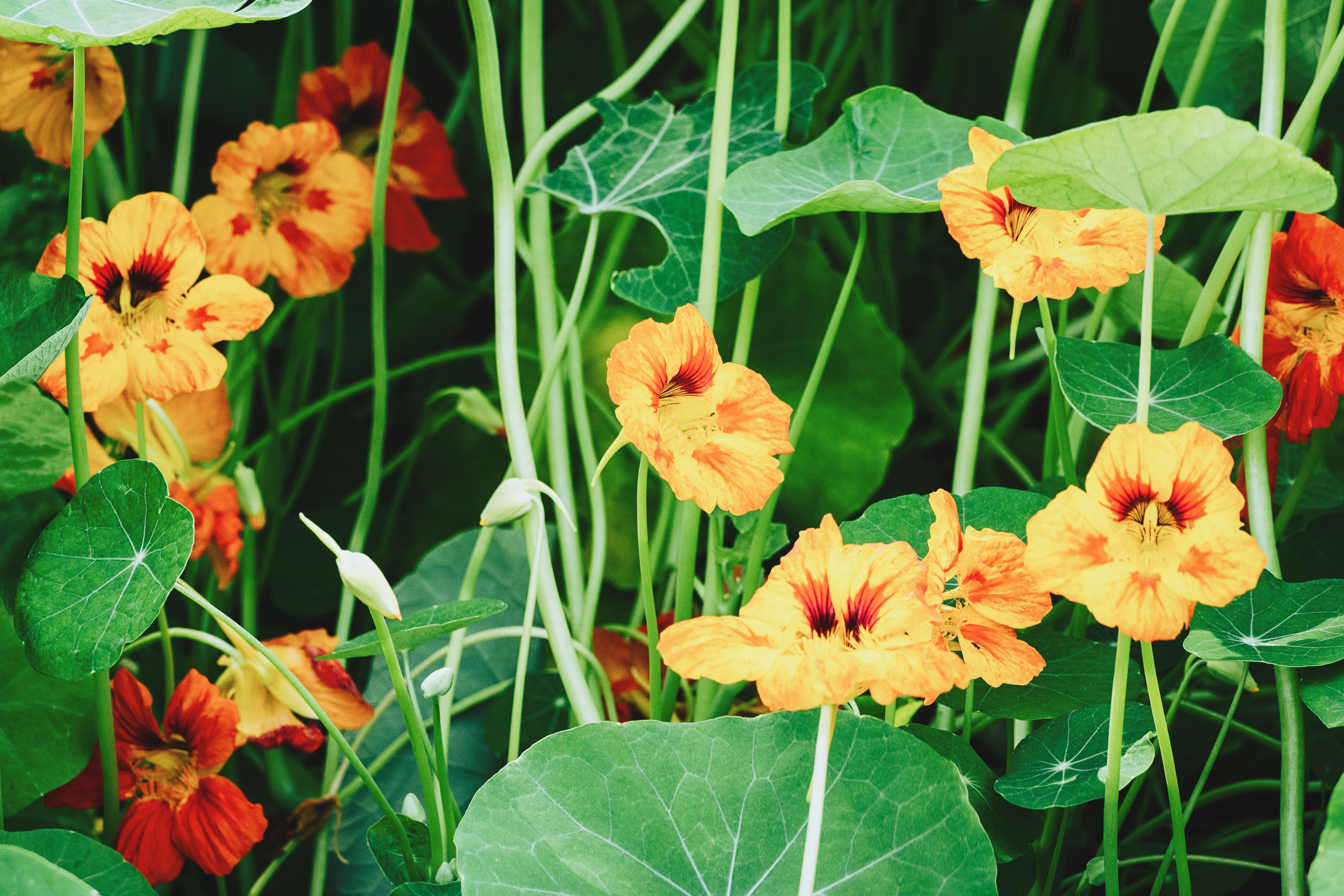- Home
- Gardening Tips
- Growing Edible Flowers
Growing Edible Nasturtium Flowers!
Simple tips to growing edible flowers! Add a little color to your meal with your own edible flowers to decorate your dishes.
An old-fashioned favorite that is beautiful and useful at the same time, nasturnium has been cultivated by home gardeners for many years. The flowers and leaves both stand out growing in any flowerbed or trailing from a window box.
On a more practical level, the whole plant is edible! The unusual round leaves are prolific and taste peppery and slightly nutty. These can be added to smoothies, soups, salads or sandwiches for enhanced flavor.

The pale orange, red or yellow flowers almost glow in the sunlight, and are a fresh, colorful addition to any salad, or as a decoration on desserts. They can be candied for a touch of elegance. The flavor is mellower than that of the leaves.
If you can spare a few flowers to go to seed, the seed pods are edible too, and stronger in flavor than the leaves or flowers. Drop them into soups or stews, or let them dry and grind them up to use just like pepper. They also pickle well and look and taste divine in flavored vinegars. You can even use the pods to add a hint of pepper to a Potpourri for a little zing.
Growing Edible Flowers with Kids
Nasturnium is a wonderful plant to grow for small children, enabling them to taste the flowers they grow. Mix in some viola or pansies and mint, for a kid friendly edible flowerbed. Make sure they're grown organically if you want to eat them!
Planting is easy for children since the seeds are large, so it's a great addition to a child's personal garden plot. Every child with the interest should have their own little plot to grow whatever they like!
Tips on Growing Edible Flowers
Nasturnium likes fairly rich soil and a moderate amount of water. It grows fine in the garden as a salad ingredient or herb, or in a flowerbed or window box. Cool roots in the summer seem to be as important as enough water. So try to give it both. A clean organic mulch can help keep the soil cool and retain moisture, as well as providing a cleaner surface for the leaves.
Plant seeds in the garden or flowerbeds right around the last frost date. Water well and often until they sprout, then water the plants only as needed. Alternatively, plant the seeds in small peat pots indoors or in the greenhouse to get a jump on the weather. Make sure the young plants get plenty of light or the plants will stretch out reaching for it, and develop weak stems. Move outside as soon as the danger of frost has passed, with a gradual transition of a few hours a day to allow the tender plants time to acclimate to the new conditions.
Nasturnium needs high light for best growth, but will benefit from some shade in the hottest part of the days during the summer.
It is a very agreeable plant and can be grown in pots for the summer, and brought in and treated as a house plant for the winter. It will need all the southern exposure you can give it when wintered indoors. Treat it as a tender herb. It will let you know when it's time to feed and move it back outside in the spring. It will reward you for excellent care with loads of beautiful edible flowers and tasty leaves the whole season long!
Go from Growing Edible Flowers to Smoothie Recipes
Go from Growing Edible Flowers to Vegetable Gardening Tips